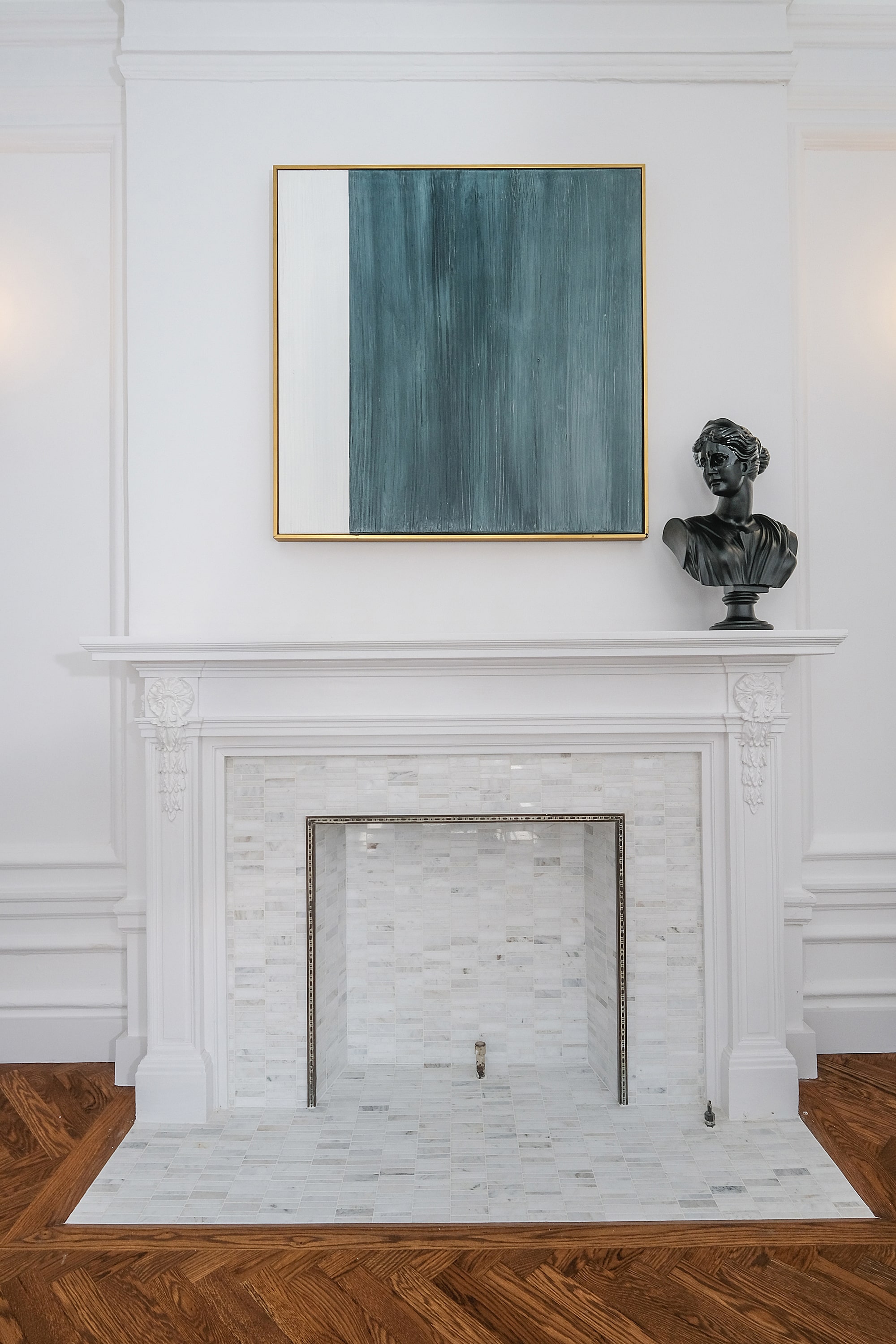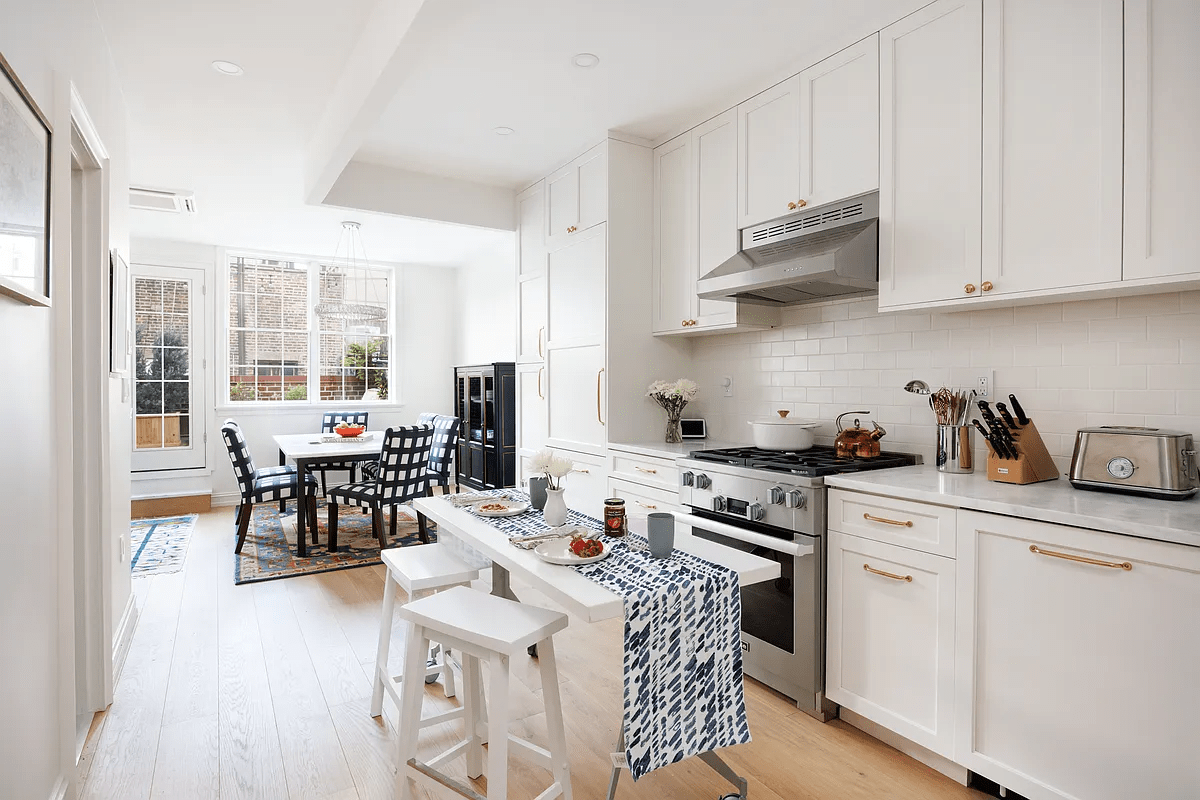Interior Design Architect vs Interior Designer: What's the Difference?
If you're in the preliminary stages of renovating your NYC home and wondering whether you need an interior design architect or interior designer, we're here to help break down the two unique roles and how they factor into your big picture renovation.
November 9, 2023
|
-min.jpg)
Interior Design Architect vs Interior Designer: What's the Difference?
Dive into the world of design as we decode the differences between interior design architects and interior designers.
TABLE OF CONTENTS
- Basic Definitions and Roles
- Educational and Professional Training
- Core Responsibilities Within a NYC Renovation
- Choosing the Right Professional for Your Needs
- Advantages of Blending Form + Function With A Design-Build Firm
- Conclusion
When renovating in New York City, where the right interior design can make or break your scarce slice of coveted real estate, envisioning the ideal design can be overwhelming. This is when those lacking design expertise, or time quite frankly, often consider the services of an interior design architect or interior designer. When your design eye plateaus, these interior renovation pros serve as the artisan of your vision, each wielding their unique set of tools and expertise to craft a space that reflects your style and purpose.
In this guide, we unravel the distinct roles, functions, and symbiotic relationship of interior architects and interior designers, illuminating how their collaboration seamlessly integrates within the full-service design-build process. Join us as we explore the canvas of design, where every brushstroke holds meaning, and every design element plays a role in the grand composition of your ideal NYC home design.
[#Basic-Definitions-Roles]Basic Definitions and Roles[#Basic-Definitions-Roles]
Interior Design Architect
An interior architect specializes in the design and structural layout of interior spaces. They focus on the functional aspects of a space, working with the architectural elements and ensuring that the interior environment is not only aesthetically pleasing but also safe, efficient, and in compliance with building codes. Interior architects play a vital role in the early stages of a project, conceptualizing the layout, flow, and spatial organization of a space. Their expertise lies in optimizing the functionality and structural integrity of interiors while ensuring a seamless integration with the external architecture. Key responsibilities often include spatial planning,ensuring safety and accessibility, and collaborating closely with potential contractors. Some Interior design architects with an interior design team also offer material selection as a service, although these engagements typically run north of 15%-20% of the overall project cost.
In Summary: Architects focus on buildings and structures
Interior Designer
An interior designer specializes in enhancing the interior environment through aesthetics and functionality. They focus on creating a cohesive and pleasing look for a space, integrating various design elements such as color, texture, furniture, and décor. Interior designers are experts in understanding the art and science of creating an atmosphere that resonates with the client's vision and purpose of the space. Their role involves selecting appropriate color schemes, furnishings, lighting, and decorative elements that complement the architecture and align with the desired ambiance. Functionality is a key aspect of their work, ensuring the design not only looks appealing but also serves the needs and lifestyle of the occupants effectively. Collaboration with architects and clients is fundamental to successfully translate concepts into captivating, functional interior designs.
In Summary: Interior designers focus on how people will interact and live within the buildings and structures
-min.jpg)
[#Educational-Professional-Training]Educational and Professional Training[#Educational-Professional-Training]
Path For Interior Architects
Becoming an interior architect typically involves a structured educational and professional journey. Aspiring interior architects often pursue a Bachelor's or Master's degree in Interior Architecture, or a closely related field from accredited institutions. These programs delve into a range of subjects, including spatial design, architectural theory, building systems, and design technologies. Some universities also offer specialized Interior Architecture programs, providing in-depth knowledge specific to this profession.
After formal education is complete, aspiring interior architects often gain practical experience through internships or entry-level positions within architecture or interior design firms. To further advance their careers and professional standing, many interior architects pursue architectural licensure. Licensure requirements vary by state but typically involve completing the Architect Registration Examination (ARE) and meeting the National Council of Architectural Registration Boards (NCARB) standards. Licensing demonstrates proficiency in architectural and interior design principles, building codes, and public safety, enhancing credibility and expanding the scope of projects an interior architect can undertake.
Path For Interior Designers
The educational paths for interior designers are diverse, allowing for a range of opportunities in the field. Many aspiring interior designers pursue a Bachelor's degree in Interior Design or Interior Architecture from accredited institutions, such as Parsons School Of Design or the New York School Of Interior Design. These programs offer comprehensive coursework covering design principles, space planning, color theory, materials, textiles, and often include practical projects and internships to develop hands-on skills.
In the United States, the National Council for Interior Design Qualification (NCIDQ) certification is highly regarded and often pursued by interior designers. NCIDQ certification signifies a designer's competency and proficiency in the field. To attain this certification, candidates typically need a combination of education and work experience, along with successful completion of the NCIDQ Examination. This exam rigorously assesses a designer's knowledge of codes, building systems, space planning, and professional conduct.

[#Core-Responsibilities]Core Responsibilities Within a NYC Renovation[#Core-Responsibilities]
Interior Architect's Role
Interior architects bring a renovation to life by merging boundless creativity with a strong foundation in architecture. Their core responsibilities revolve around the structural and architectural elements of the interior space. They ensure compliance with building codes, safety regulations, and accessibility standards. This involves meticulously planning the layout, considering structural integrity, spatial functionality, and safety features.
Building Codes and Regulations: Interior architects are responsible for understanding and implementing local building codes, fire safety regulations, and other legal requirements that pertain to the interior space. These checks and balances ensure the design and construction adhere to the standards established up-front in the partnership between client and build firm.
Structural Considerations: Assessing the existing structure and planning any necessary modifications or improvements to support the design concept are a foundational task of the interior architect. This includes decisions regarding load-bearing walls, beams, and columns, ensuring a safe and sturdy environment.
Collaboration with Builders: Interior architects closely collaborate with builders and contractors to bring their designs to fruition. They provide detailed construction drawings, specify materials, and supervise the construction process to ensure that the design is executed accurately and meets the envisioned outcome.
Interior Designer's Role
Interior designers infuse artistic flair and a deep understanding of design principles into a renovation. Their core responsibilities revolve around creating a visually appealing, functional, and harmonious interior space in line with the client's goal.
Color Palette and Materials: Interior designers curate a suitable color palette for walls, furnishings, and accents, aiming to create the desired ambiance that properly represents the homeowner’s preference. Material selection is also a critical element of an interior designer’s tasklist, involving choosing appropriate textures and finishes that illuminate the design vision.
Client's Aesthetic Desires: Understanding the client's design preferences and lifestyle is the fundamental principle of an interior designer’s expertise. Interior designers work closely with clients to grasp their aesthetic desires, functional needs, and personal style, ensuring the desired design aligns with and reflects the client's personality and vision.
In essence, interior architects focus on the technical and structural aspects, ensuring a safe and compliant design, while interior designers infuse creativity and aesthetics to craft a visually pleasing and functional space tailored to the client's preferences. Both roles are vital in delivering a comprehensive and well-rounded interior design project.

[#Choosing-The-Right-Professional]Choosing the Right Professional for Your Needs[#Choosing-The-Right-Professional]
When embarking on an interior design or renovation in NYC, selecting the right partner can significantly impact the success and outcome. Here’s a guide to help you assess the scope of your project and determine whether an interior architect or an interior designer - or a combination of both - is the best fit:
Evaluate Your Priorities
Even if budget is an afterthought and possibilities are endless, certain parts of your renovation will still take precedence over the others. When debating between an interior architect or interior designer, that priority can often guide the necessity.
Functional Transformation: If your main goal is to transform the layout and functionality of your space, prioritize hiring an interior architect. They'll ensure your space is optimized for your needs and adheres to building codes and safety standards.
Aesthetic Enhancement: If you're more focused on beautifying your space, incorporating color schemes, furnishings, and decor, an interior designer will be the key to achieving your aesthetic goals.
Consider the Costs
If you’re exclusively considering stand-alone interior contractors, consider the costs of each path and how they might differentiate depending on renovation specifications.
Costs Of Interior Architects: Interior architect fees depend on the scale and complexity of the project. Since they deal with structural aspects, costs can vary based on factors such as building size, modifications needed, and regulatory compliance. However, their expertise in maximizing space and ensuring structural integrity can lead to long-term cost savings and efficiency.
Costs Of Interior Designers: The cost of an interior designer typically involves a percentage of the total construction cost and cost of furnishings. The design fees vary based on the scope and complexity of the design, while the cost of furnishings can range from affordable to high-end, depending on preferences. Despite these costs, the value they bring lies in creating a cohesive, visually appealing space.
- Expanded Reading: Should I Hire An Architect Or Interior Designer For My NYC Renovation?

[#Advantages]Advantages of Blending Form + Function With A Design-Build Firm[#Advantages]
When a renovation is large enough to require both professions in question, the collaboration between interior architects and interior designers is natural. When unified, the outcome is a symphony of creativity and functionality, resulting in a truly transformative space. When using a design-build firm for your renovation, interior design and interior architecture services are included as part of the full-service engagement. By having both professions collaborate throughout the project, homeowners receive a more streamlined solution and a holistic approach to their space transformation. Below are some advantages of the combined approach.
Comprehensive Design Vision
The amalgamation of an interior architect's structural insights and an interior designer's aesthetic vision creates a more comprehensive design concept. This synergy ensures that not only is the space aesthetically pleasing but also structurally sound and functional, addressing the needs of the occupants effectively.
Seamless Space Planning
Interior architects excel in spatial planning, considering the layout, flow, and structure of the space. Collaborating with interior designers ensures that this spatial planning harmonizes with the envisioned aesthetic. Furniture placement, traffic flow, and functional zones are strategically aligned with the design, optimizing the space for both usability and beauty.
Cohesive Aesthetics and Functionality
An interior architect's focus on structural elements and compliance with regulations perfectly complements an interior designer's expertise in colors, materials, and decor. This collaboration leads to a cohesive design that marries aesthetics with functionality seamlessly. Every design choice, whether structural or decorative, aligns with the overall aesthetic, creating a unified and visually appealing space.
Improved Problem-Solving
Complex renovations involving significant spatial adjustments often present challenges that require innovative problem-solving. When an interior architect and interior designer collaborate, they bring diverse perspectives to the table and streamline solutions that otherwise may have eluded a singular specialist, often presenting a more creative and effective result.
Client-Centric Approach
The collaboration ensures a client-centric approach. By understanding the client's needs, preferences, and lifestyle requirements, both professionals work towards a shared goal. The design becomes a reflection of the client's personality and lifestyle, satisfying their aesthetic desires while adhering to structural and safety considerations.
-min.jpg)
[#Conclusion]Conclusion[#Conclusion]
In the realm of design and renovation, both interior architects and interior designers are indispensable, each contributing vital expertise to transform spaces. Yet, the synergy of their distinct roles is the key to achieving a perfect blend of aesthetics and functionality. For more insights into the full-service renovations Gallery KBNY delivers, explore our full portfolio of NYC renovations, visit our Design & Reno blog or contact us today.
We are an award-winning design-build firm in New York City with a full-service approach to renovations in Manhattan and Brooklyn that includes everything from interior design and architecture services to filing permits and construction management. We’re experts in pre-war apartment renovations, apartment combinations, room creations, full gut renovations and all that falls in between. Let us bring your dream home to life.

.png)
.png)


%20Gallery%20KBNY.JPG)


.jpg)

%20(2).jpg)


.jpg)
%20Gallery%20KBNY.JPG)


